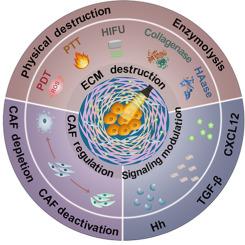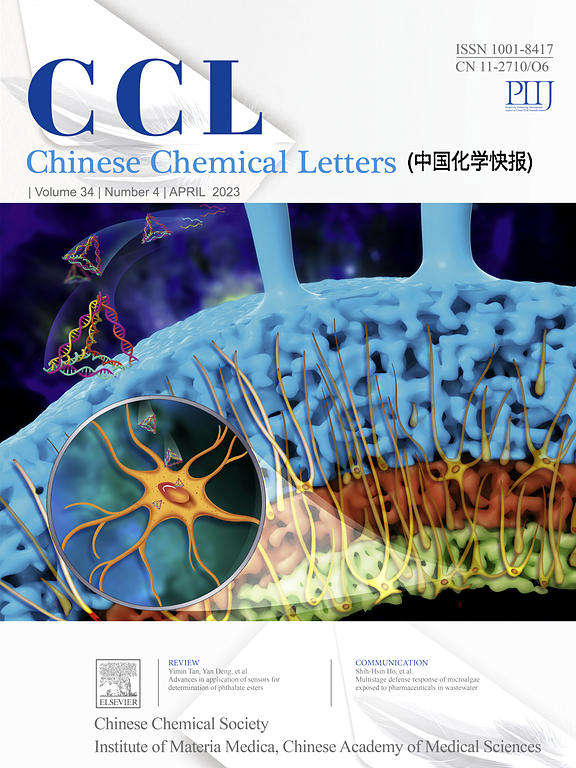操纵细胞外基质以增强基于纳米材料的光热治疗的肿瘤内药物递送
IF 8.9
1区 化学
Q1 CHEMISTRY, MULTIDISCIPLINARY
引用次数: 0
摘要
光热疗法(PTT)具有微创性和高选择性杀伤肿瘤的特点,在肿瘤治疗中具有很大的潜力。基于纳米材料的光热剂(nano-PTAs)由于其出色的光热性能和肿瘤靶向能力,进一步拓展了PTT的治疗领域。然而,肿瘤细胞外基质(ECM)致密复杂的网络严重限制了纳米pta向肿瘤深层组织的渗透。由于高温仅在激光照射纳米pta附近产生,这些药物的不均匀分布导致肿瘤不完全覆盖整个肿瘤。因此,克服ECM屏障和增强肿瘤通透性是肿瘤PTT成功的关键。为了应对这一挑战,研究人员已经探索了将肿瘤ECM调节与PTT相结合的策略,以促进纳米pta的深度扩散。本文综述了具有ecm重塑能力的纳米pta的最新设计进展,旨在使其均匀穿透肿瘤。此外,我们讨论了在阐明ECM操纵机制和理解纳米ptas与ECM组分在渗透过程中的相互作用方面存在的障碍和挑战。本文章由计算机程序翻译,如有差异,请以英文原文为准。

Manipulating extracellular matrix to enhance intratumor drug delivery for nanomaterial-based photothermal therapy
Photothermal therapy (PTT), characterized by its minimally invasive nature and highly selective tumor-killing ability, holds great potential for tumor therapy. Due to the outstanding photothermal performance and tumor targeting ability, nanomaterial-based photothermal agents (nano-PTAs) have further expanded the therapeutic horizons of PTT. However, the dense and complicated network of the tumor extracellular matrix (ECM) severely restricts the penetration of nano-PTAs into deep tumor tissues. Since elevated temperatures are only generated in the vicinity of nano-PTAs upon laser irradiation, the uneven distribution of these agents leads to incomplete tumor coverage across the tumor. Consequently, overcoming ECM barriers and enhancing tumor permeability are critical for the success of tumor PTT. To address this challenge, researchers have explored strategies that combine tumor ECM regulation with PTT to facilitate the deep diffusion of nano-PTAs. This review summarizes the latest advancements in designing nano-PTAs with ECM-remodeling capabilities, aiming to enable their uniform penetration throughout tumors. Additionally, we discuss the remaining obstacles and challenges in elucidating the mechanisms of ECM manipulation and understanding the interactions between nano-PTAs and ECM components during the penetration process.
求助全文
通过发布文献求助,成功后即可免费获取论文全文。
去求助
来源期刊

Chinese Chemical Letters
化学-化学综合
CiteScore
14.10
自引率
15.40%
发文量
8969
审稿时长
1.6 months
期刊介绍:
Chinese Chemical Letters (CCL) (ISSN 1001-8417) was founded in July 1990. The journal publishes preliminary accounts in the whole field of chemistry, including inorganic chemistry, organic chemistry, analytical chemistry, physical chemistry, polymer chemistry, applied chemistry, etc.Chinese Chemical Letters does not accept articles previously published or scheduled to be published. To verify originality, your article may be checked by the originality detection service CrossCheck.
 求助内容:
求助内容: 应助结果提醒方式:
应助结果提醒方式:


